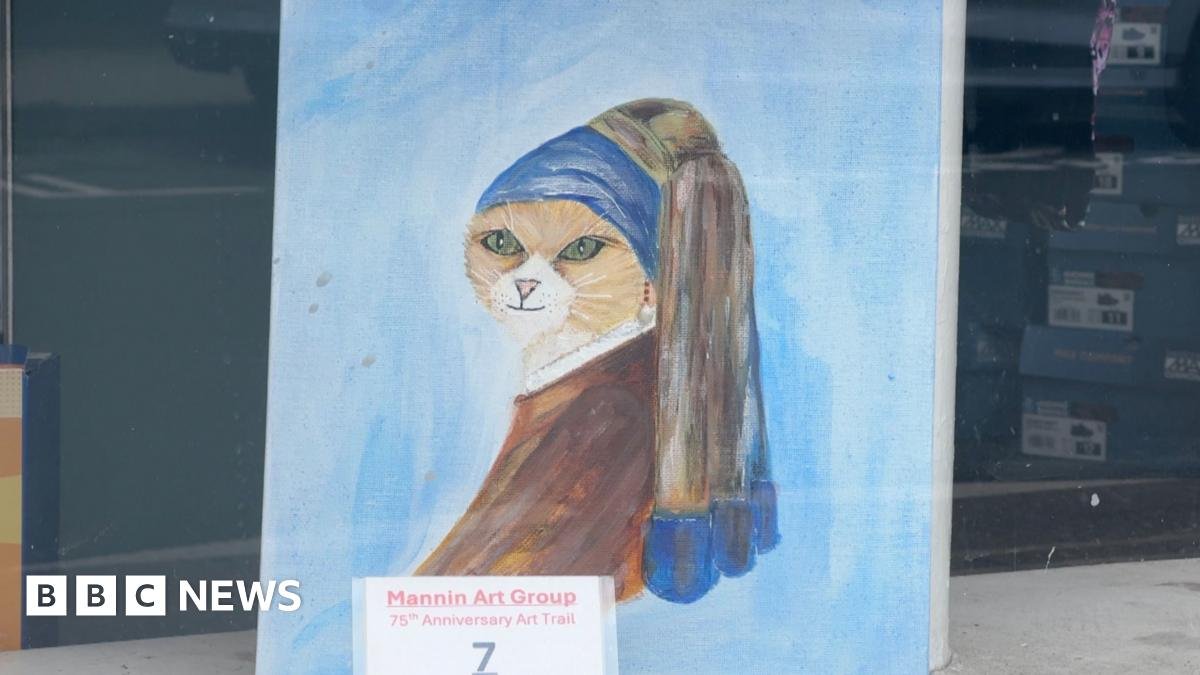HANOVER, N.H. — Earlier this month, photographer Cara Romero snapped away as Kaitlyn Anderson (Dartmouth College class of 2024) posed for what looked like a high-gloss fashion spread. Anderson wore native Hawaiian dress, held a ukulele, and was surrounded by Hawaiian regalia — all inside a giant doll box.
Romero, a member of the Chemehuevi Indian Tribe, makes elaborately staged photographs imbued with mythic drama. They celebrate Indigenous American cultures. Her first major solo exhibition, “Cara Romero: Panûpünüwügai (Living Light),” opens at Dartmouth’s Hood Museum of Art in January. The artist came to New Hampshire to create commissioned works with Native Hawaiian students for the show.

Where to find her: www.cararomero.com
Age: 47
Making a living: As an artist
Originally from: The Chemehuevi Valley Indian Reservation in California’s Mojave Desert
Lives in: Santa Fe
Studio: The doll-house set fit under a cathedral ceiling in a private home; boom lights shone from a landing above. The models for Romero’s other photos — Amedee Conley-Kapoi, Hope Ushiroda-Garma, and Teani DeFries — were working on costumes for their photo shoots. Some tore up Palapalai fern leaves for skirts.

What she makes: When Romero started making her “First American Girl” series in 2015, she said, she asked herself, “How can I create these dolls that harness the incredible beauty and diversity and authenticity of many different tribes and many different Indigenous people to counter this idea of Native Americans coming from a monolithic culture?”
How she started: A black-and-white film photography class at the University of Houston changed Romero’s life. Instructor Bill Thomas asked for panoramic photos that told something more. Most students made panoramics, but missed the content.
“I would struggle and struggle with the technical, but I had no problem coming up with a story,” Romero said. “He made me realize that was something special. And I fell in love with the power of storytelling,”

How she works: Romero came to photography at the crossroads between film and digital. She uses film practices with her digital camera.
“Everything has to be done in camera,” she said. “Even though I could Photoshop the whole frame, it’s not the same as building the whole doll box. I don’t think artificial intelligence and photo illustration is ever quite the same as the magic of real photography.”
Her work is intensely collaborative. “There’s a whole lot of jazz and a whole lot of improv and a whole lot of faith that we’re going to stay creative in the moment,” she said.
In the end, everyone involved signs off on the artwork. Given historic power dynamics in the representation of Native people, collaboration is essential to Romero.
“Photography is something that when we’re involved with it, we need to have agency over representation. It’s the only way I work,” she said.
Advice for artists: “Remember to play. It’s fun to have a relationship with the spirituality of it all. Everybody can be an artist, everybody can participate. It’s a human right to participate in art, and it always gives back.”

Cate McQuaid can be reached at catemcquaid@gmail.com. Follow her on Instagram @cate.mcquaid.






